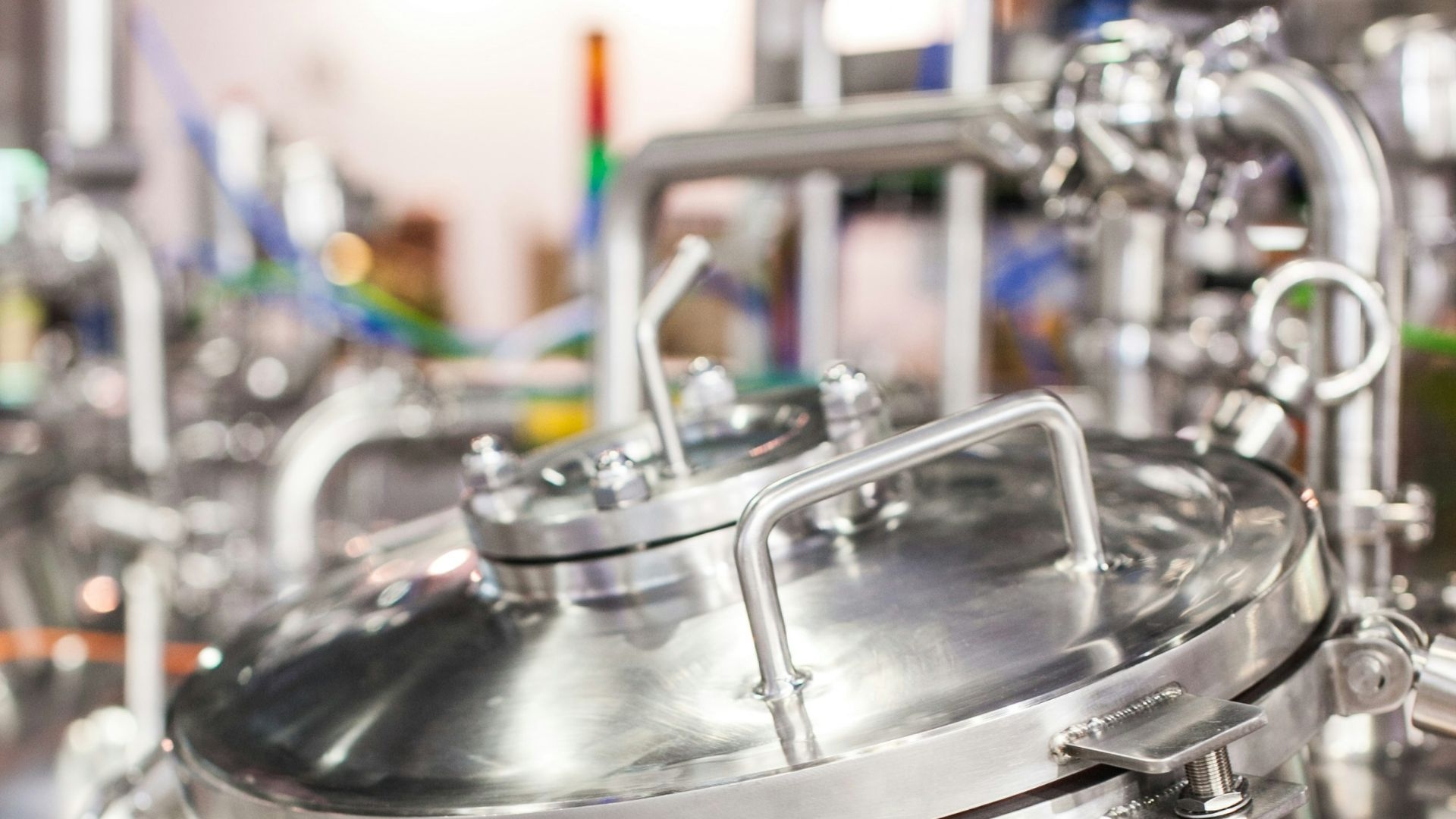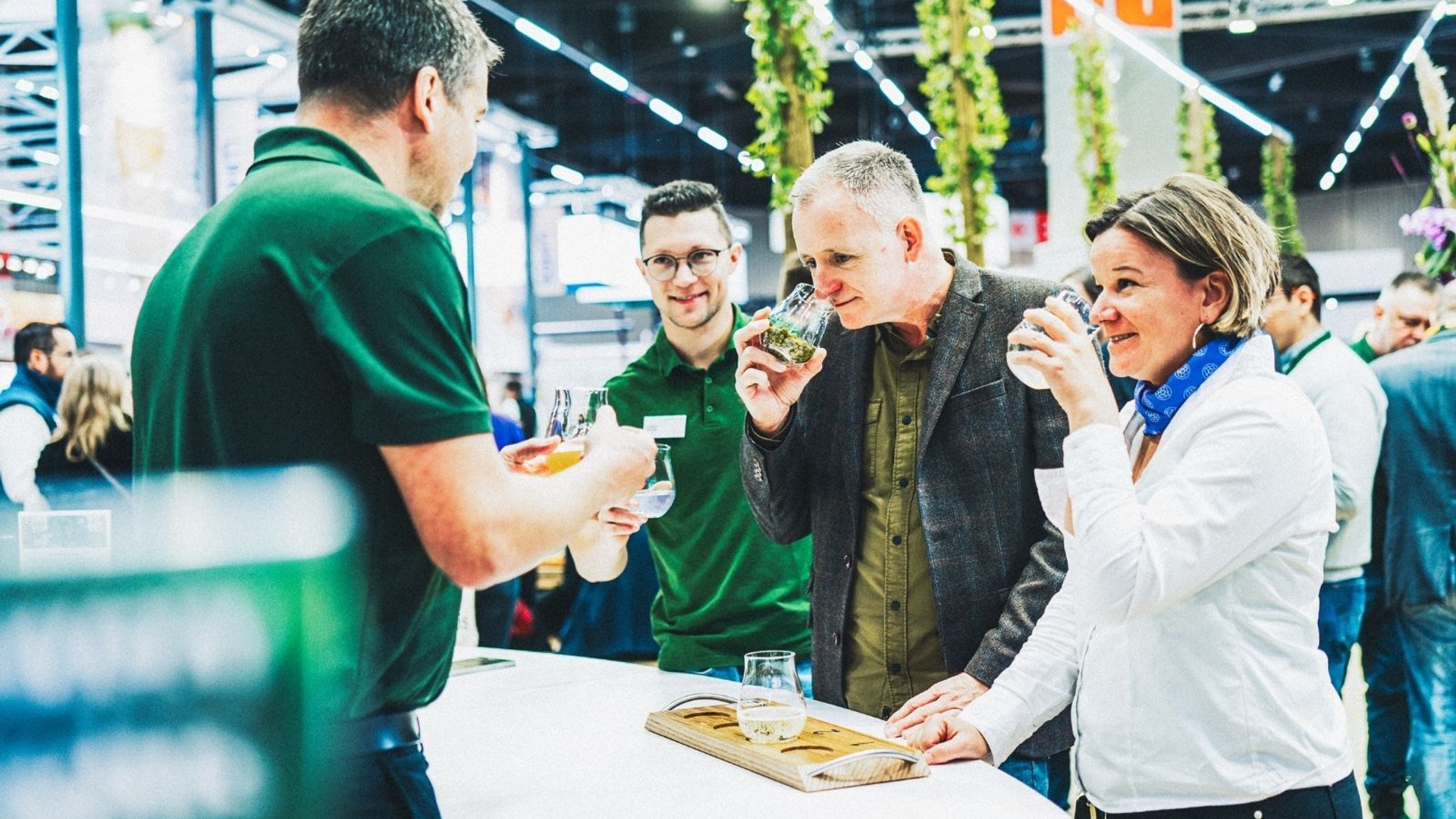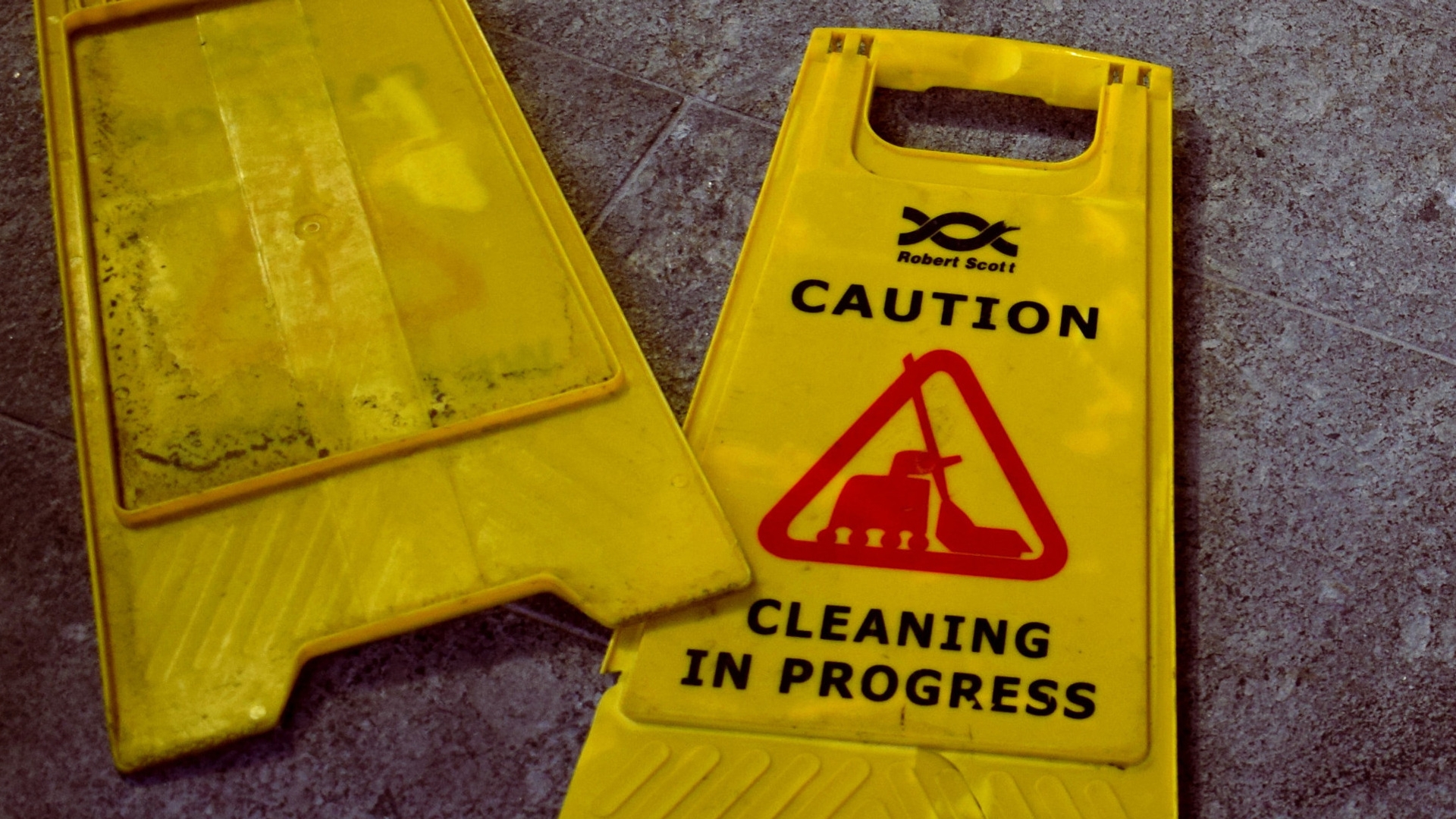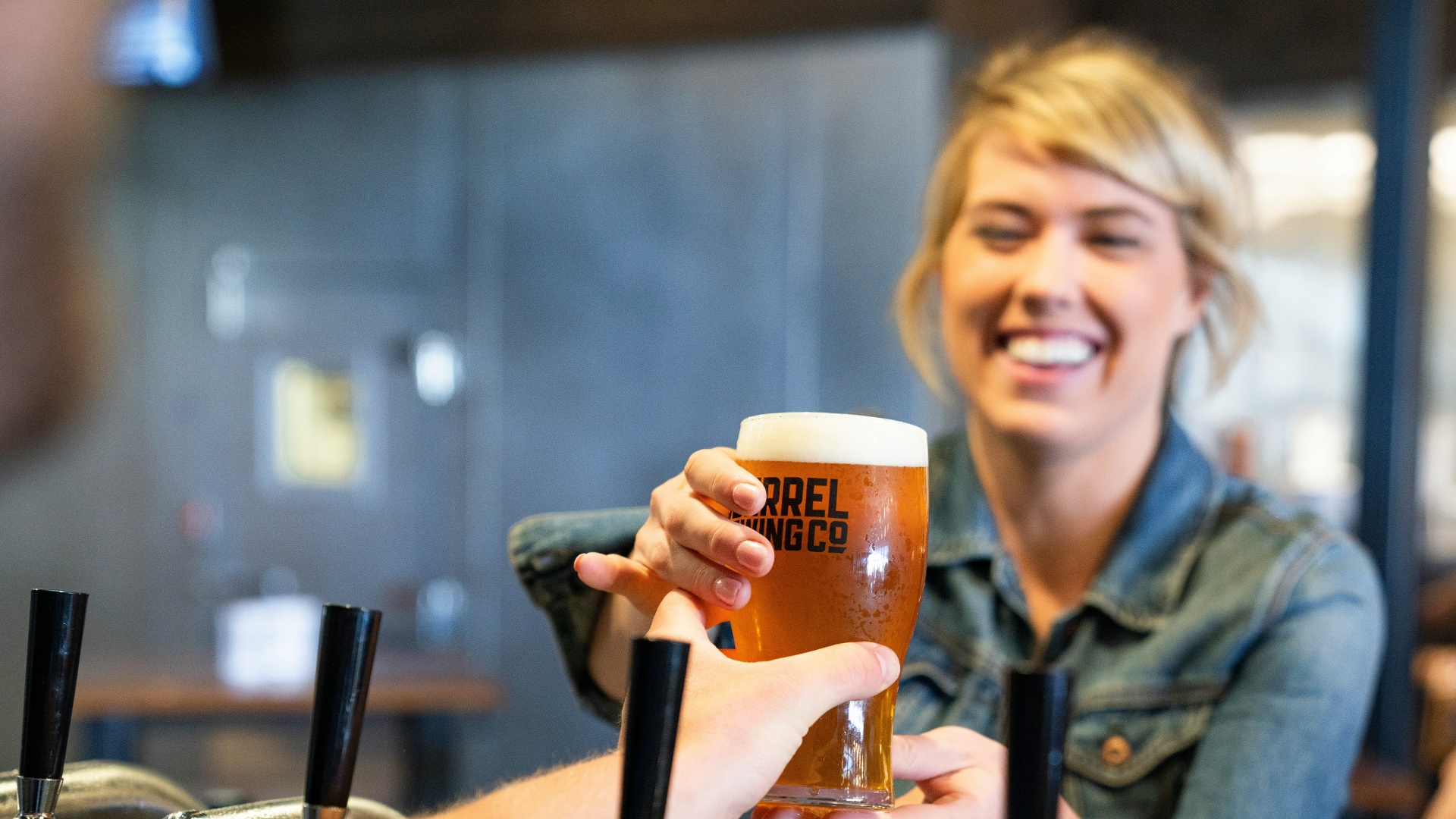A post by
Nina Anika Klotz
freelance author

It's actually logical: breweries produce CO2, breweries need CO2. So why shouldn't it be the same CO2? Unfortunately, things are rarely as simple as they are logical. A panel at BrauBeviale 2023 discussed various practical examples from medium-sized breweries. In this article, we summarise the results of the panel discussion.
Released on 15/03/2023Updated on 08/08/2024

A post by
Nina Anika Klotz
freelance author

Three master brewers reported on their experiences with different CO2 recovery systems at the BrauBeviale 2023 forum
Nevertheless, it is no longer impossible to capture the very carbon dioxide that is released during fermentation and use it elsewhere, where it is needed. To empty and pressurise tanks, for example. Or to pressurise bottles and barrels.
Recovery systems are not a dream of the future - but they may also be the future for small and medium-sized breweries.
The reasons in favour of investing in such a system are clear: firstly, it is a decisive and important step towards sustainability.
Even a rather small brewery can save 50, perhaps even 60 tonnes of CO2 that would otherwise simply be emitted, reports a brewery owner from Baden-Württemberg.
And secondly, since the CO2 shortage in summer 2022 at the latest, most people have realised the value of being self-sufficient in carbon dioxide.
At least for beer production, this is possible for medium-sized companies. However, anyone who also produces a lot of soft drinks will find it hard to avoid buying carbon dioxide.
Of course, the big question is and always will be: is it worth it? At BrauBeviale 2023, Private Brauereien Bayern brought together three master brewers on the podium who say: Yes, it is worth it. They all work with different systems.
According to master brewer Christoph Hilsenbeck, the technical conditions in his brewery in Gruibingen in the district of Göppingen were good: The fermentation and storage cellar was already equipped exclusively with ZKTs and pipes for exhaust air were already in place.
The family business then decided in favour of a CO2 recovery system from Dalum. He saw the following advantages there: Compared to competitors, the system is inexpensive, but also reliable. It works efficiently and, if something should go wrong, you can rely on the customer service and spare parts are also available in Germany.
However, Hilsenbeck sees the fact that this system comes without a balloon as a disadvantage. The system now requires between 10 and 30 minutes of labour per day for his business compared to store-bought carbon dioxide and there are laboratory costs, as the purity of the carbon dioxide produced in-house has to be ensured.
This means he can now produce carbon dioxide for 2.6 cents per kilogramme. A good deal compared to 50 cents/kg for store-bought carbon dioxide? Hilsenbeck makes precise and concrete calculations: His CO2 recovery, the CO2 tank and the vaporiser would have cost him 105,000 euros. With the cost difference of around 47 cents per kilo, the amortisation period is 4.5 years. With additional pipework costing around 60,000 euros, it would then take seven years for the system to pay for itself.
Maik Grün reports that he had already been looking into the subject for more than three years, but was "never quite happy" with the offers on the market. Then he found a partner in Wellmann who was able to work with him to plan and install a completely customised system in the brewery's existing buildings.
This was important to managing partner Jens Geimer: he did not want to seal off any more space. His main motivation is sustainability. He wants his brewery to be "100 per cent climate-neutral from its own resources" by 2030. So far, the company has only been able to achieve this by purchasing certificates. However, if it could significantly reduce the amount of carbon dioxide it buys in by around 500 tonnes per year, that would be a good step towards its goal.
Would and could, because, as Maik Grün reports: The construction of the completely unique Westerwald-Wellmann plant has been delayed, but he is very satisfied with the progress made so far.
At the Hirsch private brewery in Wurmlingen, on the other hand, the CO2 recovery plant has been in operation since 2018. The new plant. In fact, there was already a recovery plant thirty years ago. When this reached its peak, Thorsten Jauch reports that the company considered whether it should invest in such a plant again or whether it would be better to simply buy in CO2 completely in future.
In the end, however, the decision was made in favour of a new, more powerful system from Haffmans. The cost was "less than half a million". According to master brewer Thorsten Jauch, the Wurmlingen brewery is able to produce 60 to 65 per cent of the CO2 it needs itself with the help of this system. And that with an annual output of 110,000 hectolitres. Theoretically, even more would be possible: The Hirsch brewery produces 17 types of beer, six of which are top-fermented. So far, these have been fermented in open fermentation vats. However, the beaked vats were designed in such a way that it would theoretically be possible to capture the CO2 here too.
They don't at the moment, says Jauch, because the quantity of bottom-fermented beers is also large, so that the Haffmans plant, which can recover 70 kilograms of CO2 per hour, is already working at full capacity.
CO2 recovery technology is clearly now state of the art for SMEs too. However, whether the investment is worthwhile depends heavily on the circumstances of each individual brewery.
And finally, there is another point to consider that plays a major role in planning and when analysing the economic viability: CO2 recovery systems consume energy. This consumption (mainly during compression, liquefaction and vaporisation of the CO2) must be factored in when considering the economic viability.

Beer tasting
A post by Lucia Baier

Cooling when the sun is shining
A post by Tobias Schlögl

Quality assurance
A post by Dr. Jürgen Hofmann

Tapped to perfection
A post by Dr. Johannes Tippmann